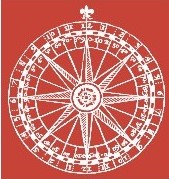Galileo’s Rhetoric of Fable
In annotations, drafts, and published materials, Galileo Galilei (1564-1642) consistently uses fables to ridicule his philosophical opponents’ forma mentis. An analysis of the revisions made to these short pieces argues that the fable was a…
Listée dans Article | publication par groupe Iter Community
Version 1.0 - publiée le 07 May 2025
Sous licence Creative Commons BY-NC 4.0
Description
In annotations, drafts, and published materials, Galileo Galilei (1564-1642) consistently uses fables to ridicule his philosophical opponents’ forma mentis. An analysis of the revisions made to these short pieces argues that the fable was a deliberate rhetorical tool with dual effect: the ability to undercut the validity of intellectual approaches and the appeal to a broader audience. Galileo draws on the traditions of vernacular satire and Latin exempla to provide a subtle manual for how to think, read, and write in the new scientific climate that his work had generated. Contextualized against the more-widely read “Fable of the Researcher of Sounds” from the Assayer (1623), these negatively characterized exempla demonstrate what this article calls a “rhetoric of fable.”
Citer ce travail
Les chercheurs doivent citer ce travail comme suit :
Tags
Notes
Original publication: Hall, Crystal. "Galileo’s Rhetoric of Fable." Quaderni d'italianistica 31 (2): 2011. 91-112. DOI: 10.33137/q.i..v31i2.14990. This material has been re-published in an unmodified form on the Canadian HSS Commons with the permission of Iter Canada / Quaderni d'italianistica. Copyright © the author(s). Their work is distributed by Quaderni d'italianistica under a Creative Commons Attribution-NonCommercial 4.0 International License. For details, see https://creativecommons.org/licenses/.
Aperçu de la publication
Iter Community
This publication belongs to the Iter Community group.
When watching a publication, you will be notified when a new version is released.
